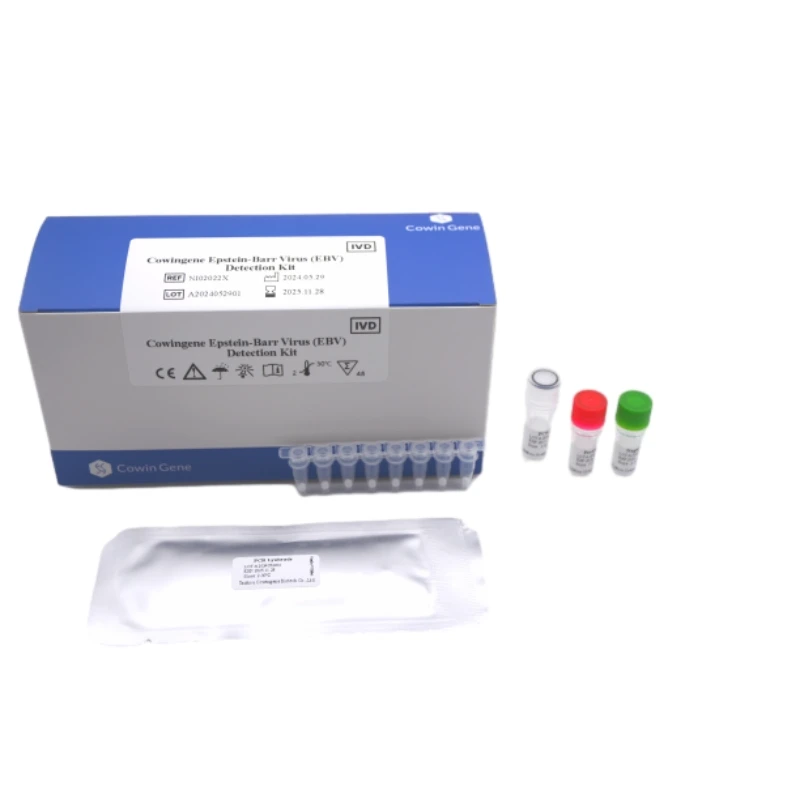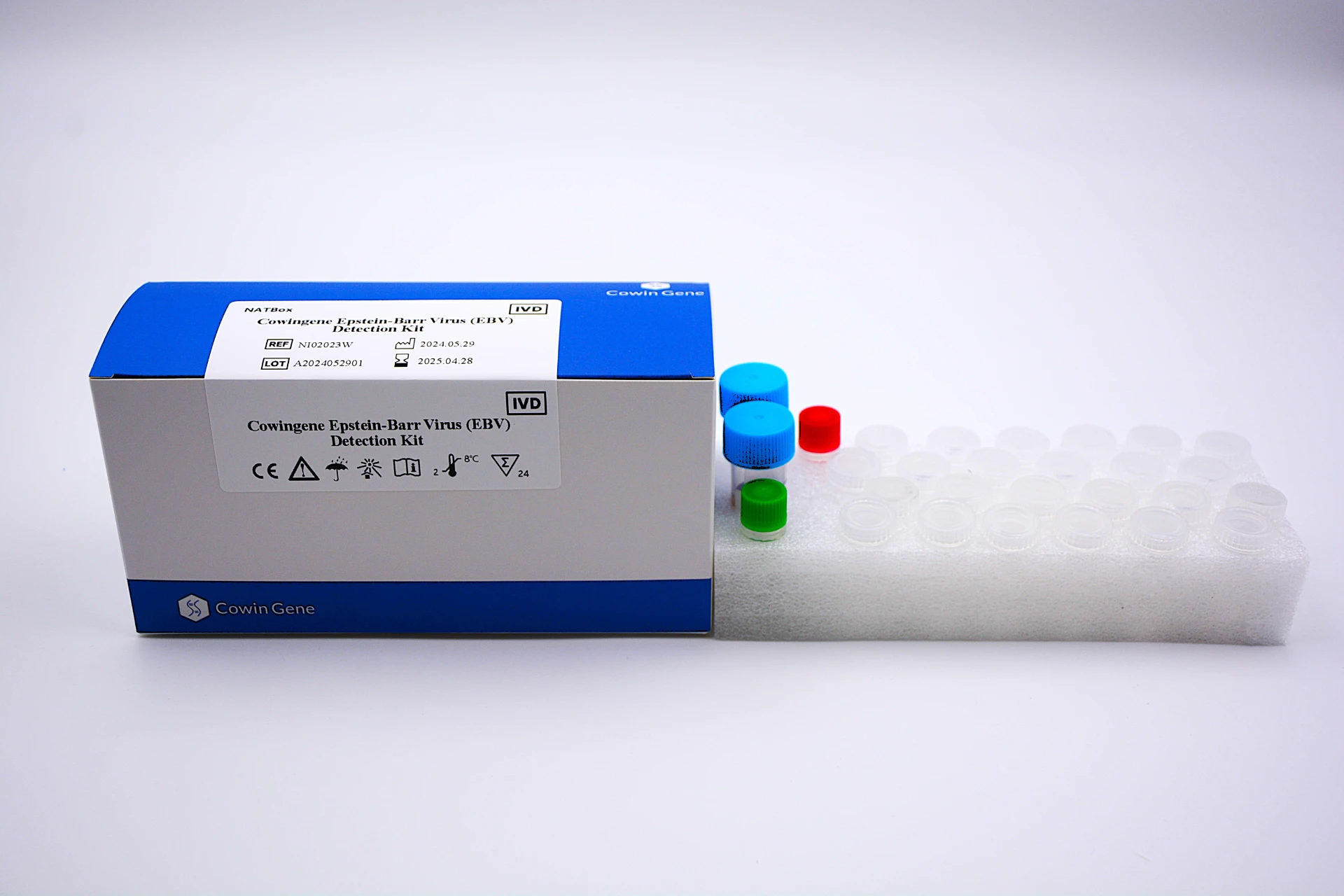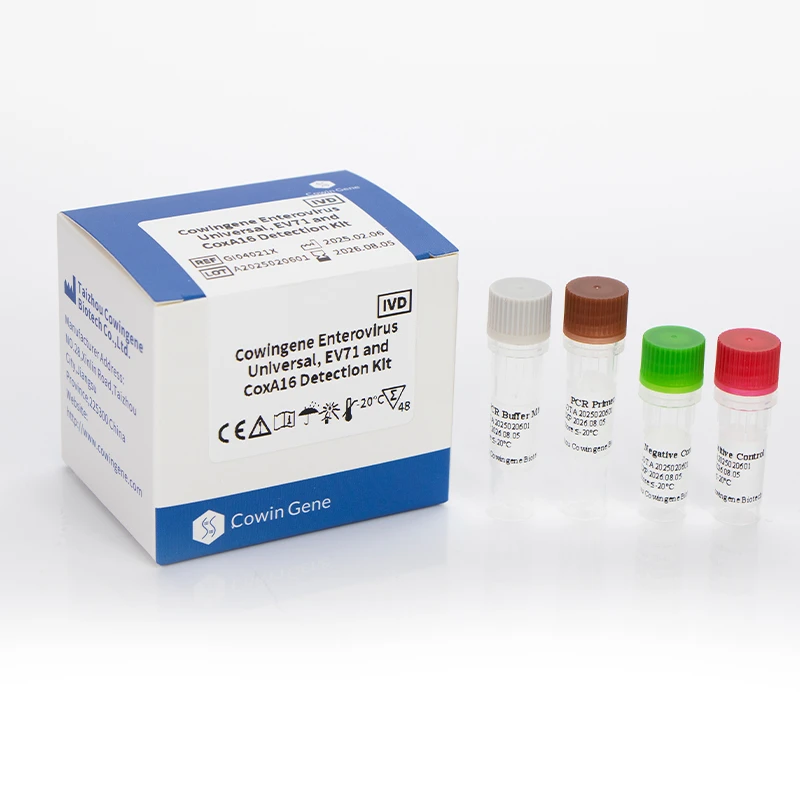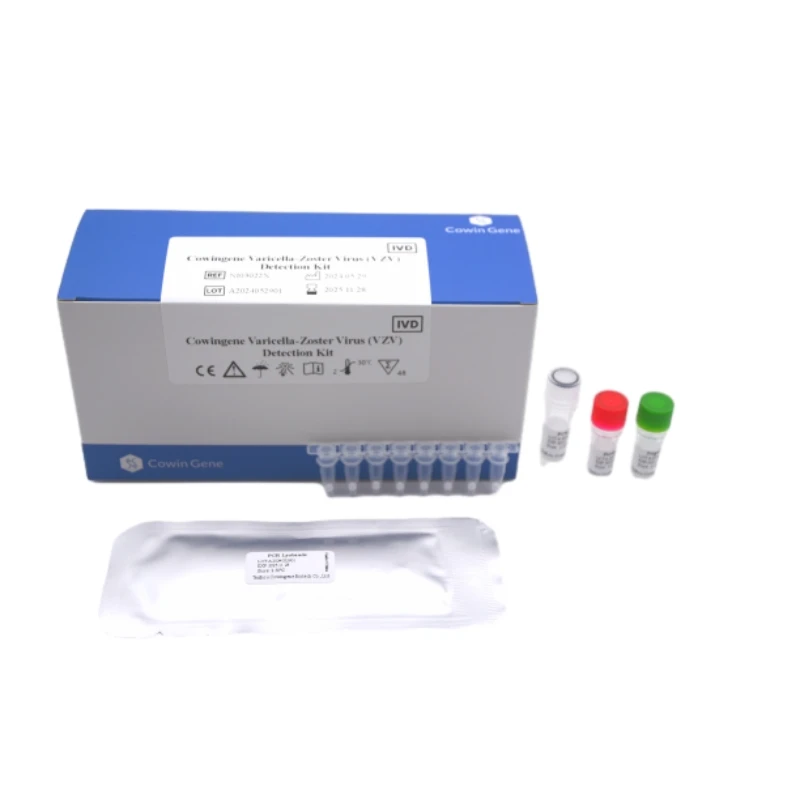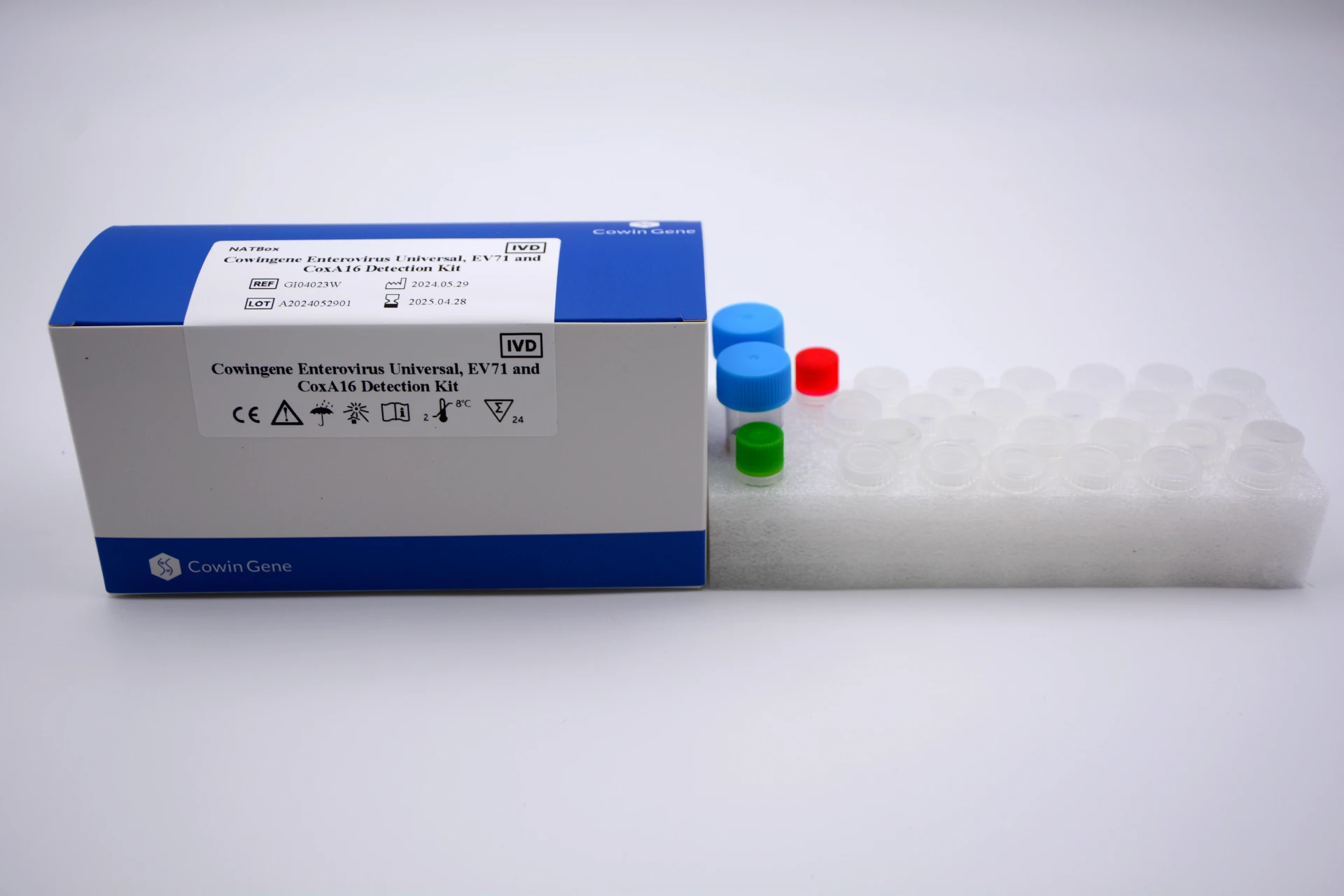Aug . 31, 2025 21:55 Back to list
Chlamydia DNA PCR and Related Detection Technologies: A Comprehensive Overview
Chlamydia DNA PCR is a pivotal molecular technique used for the accurate identification of Chlamydia trachomatis, a common pathogen that causes sexually transmitted infections (STIs) affecting the urogenital tract. This method leverages the polymerase chain reaction (PCR) to amplify specific segments of the Chlamydia trachomatis DNA, enabling the detection of even low concentrations of the pathogen in clinical samples. Unlike traditional culture-based methods that require longer incubation periods, Chlamydia DNA PCR offers rapid results, making it a preferred choice in both clinical laboratories and point-of-care settings. It can be applied to various sample types, including urine, cervical swabs, and urethral swabs, ensuring flexibility for different patient populations and testing needs. By targeting conserved regions of the Chlamydia trachomatis genome, Chlamydia DNA PCR minimizes the risk of false negatives, providing reliable data to guide clinical decisions related to diagnosis and treatment.
Chlamydia real time PCR represents an advanced iteration of Chlamydia DNA PCR, integrating real-time monitoring of the amplification process to enhance both efficiency and accuracy
This technology uses fluorescent probes that bind to the target Chlamydia trachomatis DNA sequences during amplification, allowing for the quantification of the pathogen load and immediate detection of positive results. Chlamydia real time PCR eliminates the need for post-amplification analysis, reducing the risk of cross-contamination and shortening the overall testing workflow. It is particularly valuable in high-volume testing environments, such as public health clinics, where timely and precise results are critical for preventing the spread of Chlamydia trachomatis infections. Additionally, the ability to detect and quantify the pathogen load helps healthcare providers assess the severity of infections and monitor the effectiveness of treatment over time.
Chlamydia trachomatis real time pcr is a specialized form of Chlamydia real time PCR designed exclusively for the detection of Chlamydia trachomatis, ensuring high specificity for this particular pathogen
This technique targets unique genetic markers of Chlamydia trachomatis, such as the ompA gene or the cryptic plasmid, which are absent in other bacterial species, thus avoiding cross-reactivity with non-target organisms. Chlamydia trachomatis real time pcr is highly sensitive, capable of detecting as few as 10 genomic copies of the pathogen per sample, making it effective even in cases of early or asymptomatic infections. It is widely used in routine STI screening programs, especially for populations at high risk of Chlamydia trachomatis infection, as it enables early intervention and reduces the likelihood of long-term complications such as pelvic inflammatory disease or infertility.
PCR Chlamydia trachomatis Neisseria gonorrhoeae is a multiplex PCR assay that simultaneously detects two major STI-causing pathogens
Chlamydia trachomatis and Neisseria gonorrhoeae. This combined approach streamlines the testing process, allowing healthcare providers to identify co-infections with a single sample, which is common given the overlapping risk factors for these two infections. PCR Chlamydia trachomatis Neisseria gonorrhoeae uses distinct fluorescent probes for each pathogen, enabling the simultaneous amplification and detection of their respective DNA sequences. This method offers the same high sensitivity and specificity as individual PCR assays for each pathogen, while reducing the time, cost, and sample volume required for testing. It is particularly beneficial in busy clinical settings, where efficient and comprehensive STI screening is essential for patient care and public health management.
Urine Chlamydia trachomatis and Neisseria gonorrhoeae detection is a non-invasive testing approach that uses urine samples to identify both Chlamydia trachomatis and Neisseria gonorrhoeae via PCR-based methods
This method eliminates the need for invasive swab collection, improving patient comfort and compliance, especially among individuals who may be hesitant to undergo traditional swab-based testing. Urine Chlamydia trachomatis and Neisseria gonorrhoeae detection relies on the same PCR principles as other assays, amplifying specific DNA regions of the two pathogens present in urine. It is validated for use in both men and women, with high accuracy comparable to swab-based samples. This non-invasive approach has expanded access to STI screening, particularly in community settings, schools, and outreach programs, where ease of sample collection is crucial for reaching diverse populations.

In summary, Chlamydia DNA PCR serves as the foundation for a range of advanced detection technologies, including Chlamydia real time PCR, Chlamydia trachomatis real time pcr, PCR Chlamydia trachomatis Neisseria gonorrhoeae, and urine-based detection methods for Chlamydia trachomatis and Neisseria gonorrhoeae. These technologies collectively offer high sensitivity, specificity, and flexibility, addressing the diverse needs of clinical practice and public health screening. By enabling rapid, accurate, and in some cases non-invasive detection of Chlamydia trachomatis and co-occurring Neisseria gonorrhoeae, they play a critical role in early diagnosis, treatment guidance, and the prevention of STI transmission. As molecular diagnostic techniques continue to evolve, these PCR-based methods are likely to remain essential tools in the global effort to reduce the burden of urogenital STIs, supporting improved patient outcomes and public health outcomes.
Chlamydia DNA Pcr FAQs
1. What is the role of chlamydia DNA PCR in the Cowingene 14 STI Detection Kit?
The Cowingene 14 STI Detection Kit utilizes chlamydia DNA PCR technology to accurately detect Chlamydia trachomatis (CT) in various sample types including urine, male urethral swabs, and female cervical or vaginal swabs. This molecular approach ensures high sensitivity and specificity in identifying CT infections.
- How does chlamydia DNA PCR enhance the detection of multiple pathogens in the STI 14 panel?
Chlamydia DNA PCR is integrated into a multiplex PCR system that simultaneously detects 14 pathogens including CT NG Mh HSV1 UU HSV2 UP Mg CA GV TV GBS HD and TP. This allows for comprehensive screening from a single sample reducing processing time and improving diagnostic efficiency.
3. Why is chlamydia DNA PCR critical for accuracy in urogenital infection testing?
Chlamydia DNA PCR provides exceptional precision in amplifying and identifying Chlamydia trachomatis DNA even at low concentrations. This method minimizes cross-reactivity and false results ensuring reliable detection alongside other STI pathogens in the kit.
4. Which sample types are compatible with the chlamydia DNA PCR assay in this kit?
The chlamydia DNA PCR assay supports diverse clinical specimens such as urine male urethral swabs female cervical swabs and female vaginal swabs. This flexibility facilitates non-invasive and invasive sampling options for different patient groups.
5. How does chlamydia DNA PCR contribute to early diagnosis and treatment of STIs?
By enabling rapid and precise detection of Chlamydia trachomatis chlamydia DNA PCR aids clinicians in initiating targeted therapy quickly. This helps prevent complications and reduces transmission within the community when used as part of the comprehensive STI 14 panel.
Related PRODUCTS
-
Norovirus Detection Kit - Rapid, Accurate, CE-Marked
NewsNov.17,2025 -
DNA Extraction Kit | Fast, High-Yield, PCR-Ready Purity
NewsNov.17,2025 -
Human Papilloma Virus HPV PCR: Fast, Sensitive, Accurate
NewsNov.17,2025 -
Arbovirus PCR Test - Rapid, Accurate, Multiplex Detection
NewsNov.17,2025 -
Respiratory Panel Test for Fast, Accurate PCR Diagnosis
NewsNov.17,2025 -
Respiratory Panel Test for Rapid, Accurate PCR Diagnosis
NewsNov.04,2025


